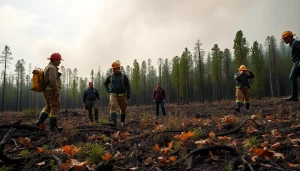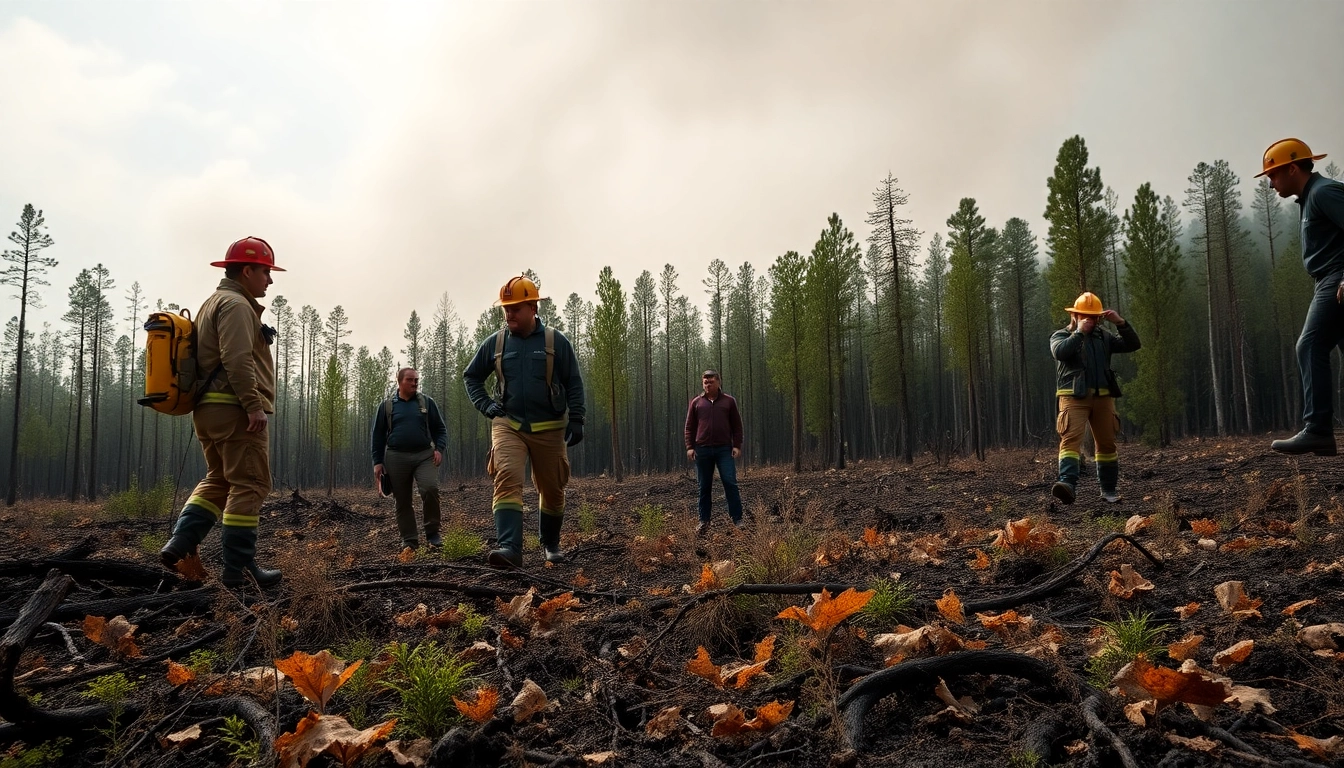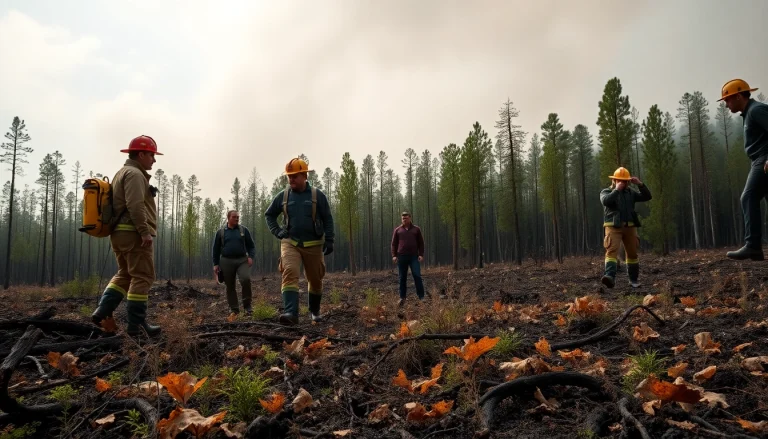Understanding Wildfire Events
Wildfire events have become a critical topic of discussion around the globe, as these natural phenomena increasingly affect communities, ecosystems, and economies. The increasing frequency and severity of these events compel us to examine their underlying causes and the conditions that contribute to their occurrence. Through understanding wildfire events, we can better prepare and respond to their devastating impacts.
What Are Wildfire Events?
Wildfire events are uncontrolled fires that burn in natural areas, such as forests, grasslands, and wilderness. These events can occur due to various factors, including human activities, natural occurrences, or climate-driven conditions. Wildfires can spread rapidly, fueled by dry vegetation and wind, resulting in substantial damage to property and loss of life. In many regions, these fires are a natural part of the ecosystem, helping to rejuvenate growth and maintain biodiversity. However, the increasing frequency of wildfire events due to climate change poses significant challenges.
Causes and Conditions Contributing to Wildfire Events
The causes of wildfire events are complex and multifaceted. Understanding both natural and anthropogenic factors is critical. Natural causes include lightning strikes, which ignites dry vegetation during hot, dry conditions. On the other hand, human activities, including land clearing, arson, and power line failures, contribute to many wildfires. Additionally, various environmental conditions, such as prolonged drought, high temperatures, and strong winds, create conducive conditions for these fires to ignite and spread.
Global Trends in Wildfire Events
Globally, there has been a significant increase in the number of wildfire events, particularly in regions prone to arid conditions. Research indicates that climate change is influencing the length and intensity of wildfire seasons. In the United States, for instance, wildfire events have grown more destructive, with vast areas of land being impacted each year. According to recent reports, millions of acres have burned, leading to a trend of heightened vulnerability and a pressing need for proactive wildfire management strategies.
Historical Overview of Significant Wildfire Events
Major Wildfire Events in Recent History
Some of the most destructive wildfire events in recent history serve as poignant reminders of the catastrophic impact of these phenomena. For example, the 2019-2020 Australian bushfire season resulted in the loss of human life, widespread property destruction, and the decimation of wildlife. Similarly, the Camp Fire in California in 2018 was one of the deadliest and most destructive wildfires in U.S. history, resulting in the destruction of an entire town and thousands of casualties. Such instances underline the urgent need for comprehensive data-driven strategies to mitigate the risks associated with wildfire events.
Economic Impact of Wildfire Events
The economic ramifications of wildfire events are profound, affecting not only direct costs associated with firefighting and recovery but also indirect costs such as loss of business and decreased property values. Industries such as tourism, agriculture, and forestry often bear the brunt of these economic impacts. The National Interagency Fire Center reports that wildfire events cost billions of dollars each year in damage and suppression efforts. The economic burden intensifies when factoring in long-term recovery efforts necessitated by destruction.
Geographic Regions Most Affected by Wildfire Events
Certain geographic regions are more susceptible to wildfire events due to their climate, vegetation types, and topography. Areas such as the western United States, Mediterranean regions, and parts of Australia consistently experience severe wildfire seasons. In the U.S., states like California, Colorado, and Oregon have witnessed disastrous wildfires, often exacerbated by development that places homes in direct proximity to forested areas. Understanding the geographic risk is vital for establishing effective preparedness and mitigation strategies.
Effects of Wildfire Events on Health and Environment
Health Risks Associated with Wildfire Events
The health implications of wildfire events extend beyond the immediate dangers of fire and smoke inhalation. Wildfire smoke can severely impact air quality, contributing to respiratory issues, cardiovascular problems, and other health complications. Vulnerable populations, such as children, the elderly, and those with pre-existing health conditions, face heightened risks. Additionally, there are mental health effects from the trauma and anxiety associated with living near wildfire-prone areas, necessitating a robust response from health care and community services.
Environmental Consequences of Wildfire Events
Wildfires can have profound and lasting effects on the environment. Immediately, they can destroy vegetation, wildlife habitats, and ecosystems. The burning of forests can lead to soil erosion, loss of nutrients, and changes in water cycles. It may take years for the ecosystem to recover, and in some cases, invasive species may take hold where native flora once thrived. Understanding these ecological impacts is essential for land management and restoration efforts following wildfire events.
Long-term Ecological Changes After Wildfire Events
In the long term, wildfire events can result in significant ecological shifts. While some ecosystems are resilient and capable of recovery, others may not benefit from fire in the same way due to climate change and other anthropogenic stresses. Studies show that changes in species composition, soil chemistry, and habitat availability can persist for years after a wildfire. Monitoring these changes is crucial to inform conservation efforts and land management practices to foster resilience against future wildfires.
Prevention and Management Strategies for Wildfire Events
Community Preparedness for Wildfire Events
Community preparedness is critical in minimizing the impact of wildfire events. Effective strategies include creating defensible spaces around homes, implementing community-wide risk assessments, and promoting public education about fire safety. Local government initiatives, such as the development of emergency response plans, community firefighting resources, and training for residents, are pivotal. Engaging residents in preparedness initiatives can foster resilience and improve response times during wildfire events.
Government Policies Addressing Wildfire Events
At the policy level, government agencies play a crucial role in wildfire management. Implementing measures such as stricter building codes in fire-prone areas, developing firebreaks, and investing in controlled burns to manage underbrush can mitigate the impact of wildfire events. Collaboration between federal, state, and local agencies, along with community stakeholders, is imperative for creating comprehensive wildfire management policies that are responsive and adaptable to changing conditions.
Technological Innovations in Wildfire Events Management
Technological advancements are revolutionizing wildfire management strategies. Innovations such as satellite imagery for fire detection, drones for real-time monitoring, and predictive modeling employing AI can significantly enhance management efforts and response times. These technologies provide valuable data that can assist in understanding fire behavior, improving communication during emergencies, and deploying resources more efficiently. The integration of technology into wildfire management continues to evolve, promising more effective solutions to complex challenges.
Future Outlook on Wildfire Events
Climate Change and Its Influence on Wildfire Events
Looking to the future, climate change will undoubtedly continue to influence the occurrence and intensity of wildfire events. Increased temperatures, shifting precipitation patterns, and prolonged drought conditions create an environment where wildfires can thrive. Understanding these relationships is vital for developing adaptive strategies that address the challenges posed by climate change while fostering community resilience against future wildfire events.
Predicted Trends for Wildfire Events in the Coming Years
Experts predict that the trend of increasing frequency and severity of wildfire events will persist in the coming years. This forecast necessitates proactive strategies focusing on land management, enhancing firefighting capabilities, and integrating community preparedness. By anticipating future challenges, we can work towards creating more resilient ecosystems and communities ready to face the realities of a changing climate.
Community Resilience and Recovery Post-Wildfire Events
Community resilience plays a crucial role in recovery following wildfire events. Building networks of support and resources for affected individuals and businesses is essential. Engaging in post-fire recovery programs that focus on both mental health support and economic revitalization can help communities rebuild stronger than before. Collaborative efforts among community members, organizations, and government agencies can inspire innovation and adaptation, paving the way toward a more resilient future in the face of wildfire events.





















+ There are no comments
Add yours